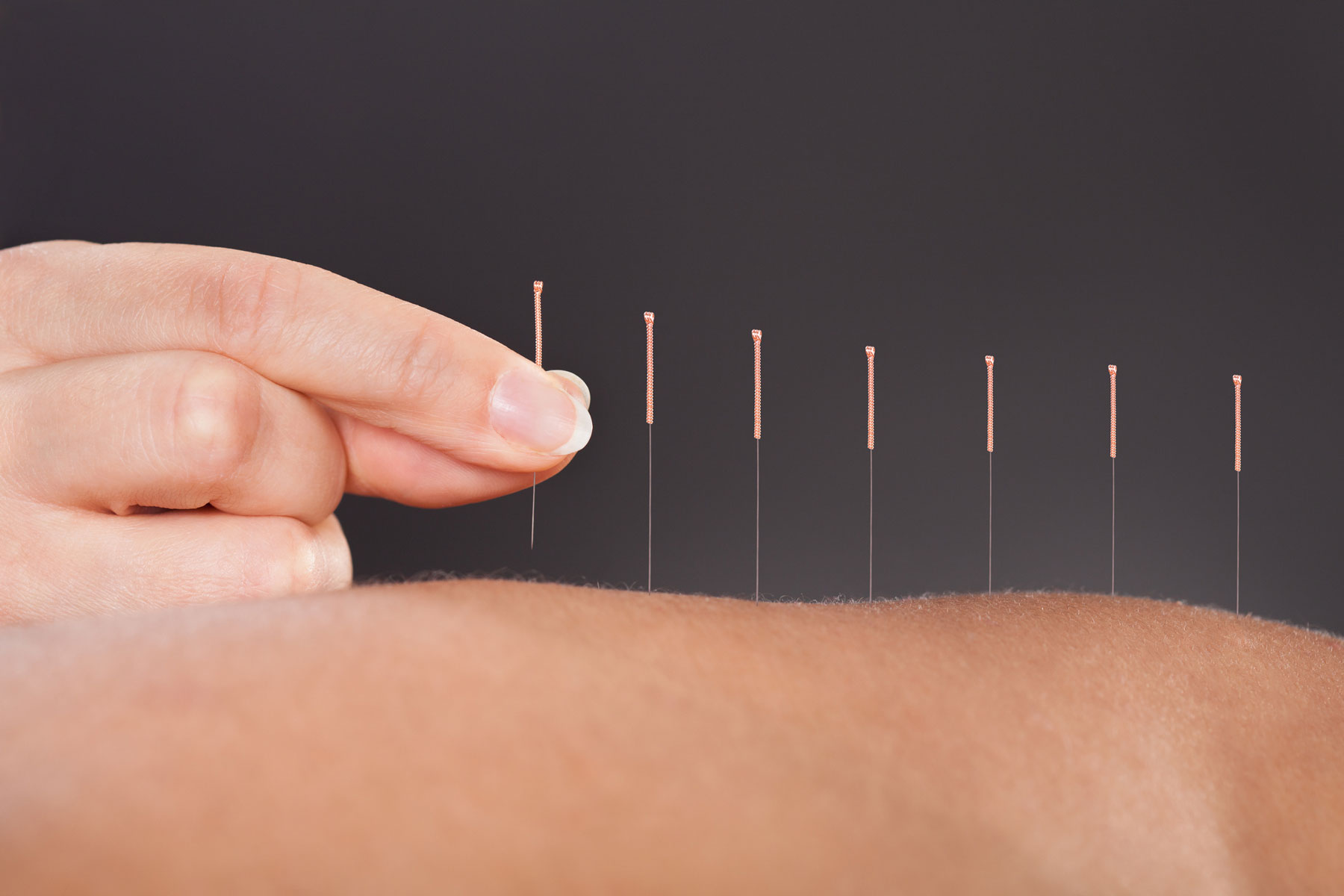
Acupuncture and Musculoskeletal Pain
As more and more people are turning away from pharmaceutical treatments for musculoskeletal pain, interest in traditional Chinese medicine (TCM) is on the rise. One of the most common types of TCM used for treating pain is acupuncture. Although acupuncture originated in China thousands of years ago, until recently it only had a niche following in the United States. According to a survey from the National Center for Health Statistics, its popularity has grown significantly over the last ten years, with more than 6 million Americans receiving acupuncture in 2017.
What is Acupuncture and How Does it Work?
TCM is based on the belief that the body contains a vital life energy, called qi (chee), which runs along pathways in the body called meridians. Imbalances or blockages in the flow of qi are thought to cause illness. These life energy pathways are accessible at approximately 400 different locations, or points, on the body. Practitioners of acupuncture attempt to rebalance the energy flow by inserting extremely fine needles into these points at various depths and in various combinations. According to Chinese medicine, this treatment allows the body’s natural healing mechanism to take over and help repair injury and reduce pain.
Researchers at the National Institutes of Health (NIH) have identified two possible explanations for how acupuncture works:
- Natural Opioid Release: During acupuncture, endorphins, which are part of your body’s natural pain-control system, are released into your central nervous system (the brain and spinal cord). This release helps reduce pain much like taking a pain medication.
- Spinal Cord Stimulation: Acupuncture stimulates the pain inhibitory nerve fibers in your spinal cord which lowers the pain signal and therefore relieves pain. This has also been referred to as “gate theory”. Acupuncture stimulates A-beta nerve fibers (large and fast conducting) which “closes the gate” in the spinal cord to the passage of painful impulses from the C fibers (small and slow conducting) so that hypothetically pain is not felt.
Is Acupuncture Effective for Pain?
More than two thousand years of Eastern medicine studies and anecdotal evidence says YES, acupuncture is an effective treatment for pain. In addition, over the last twenty years, research in the United States and Europe, has added to the evidence that acupuncture does appear to provide real relief of pain. In 2006, a Mayo Clinic study showed that acupuncture significantly improved the symptoms of fibromyalgia. In an article published in The Archives of Internal Medicine in 2012, a team of researchers presented the pooled results of 29 studies, involving nearly 18,000 participants, which studied the effects of acupuncture on chronic back, neck, and shoulder pain. Overall, the authors reported a 50% reduction in pain with acupuncture treatment. Finally in 2016, a systematic review of 22 clinical trials involving 4985 people, provided evidence that acupuncture reduces the frequency of migraine headaches by 50% in up to 59% of individuals receiving this treatment, which may be similar to the effect of preventative medications.
Contraindications to Acupuncture:
There are no absolute contraindications to acupuncture needling alone. Relative contraindications include local skin infection or skin breakdown and concomitant use of anticoagulant (blood-thinning) medications. Notably, in a systematic review of 384 patients who underwent a total of 3974 acupuncture treatments, only one patient (.03%) had a serious episode of bleeding related to a combination of anticoagulation and acupuncture. When electrical stimulation is used with acupuncture, however, the presence of a cardiac pacemaker or defibrillator is a contraindication.
Choosing an Acupuncture Practitioner:
In the United States, acupuncture is traditionally offered by two types of medical professionals:
- Medical Doctors: More than 3,000 medical doctors use acupuncture in their clinical practice. Most states require these doctors have at least 200 to 300 hours of acupuncture training in addition to their medical training. The American Academy of Medical Acupuncture (AAMA) is the professional society of physicians (MDs and DOs) in North America who have incorporated acupuncture into their traditional medical practice. Search the AAMA website to learn more about acupuncture and find a medical doctor that performs acupuncture in your area.
- Certified Acupuncturists: Greater than 11,000 certified acupuncturists practice in the United States. To be certified, these practitioners are required to complete between 2,000 and 3,000 hours of training in one of several independently accredited master’s degree programs. They must also successfully pass a board exam conducted by the National Certification Commission for Acupuncture and Oriental Medicine (NCCAOM). Use the NCCAOM website to help locate a certified acupuncturist in your area.
If you are considering acupuncture, you can also ask your health care provider for a recommendation. In addition, make sure to check the practitioner’s training and credentials, interview the practitioner about what is involved in the treatment and how likely it is to help your condition, and find out what the cost of treatment is and whether or not it is covered by insurance. If you are patient at Desert Spine and Sports Physicians, please ask us about acupuncture and our list of preferred providers. We are pleased to support you and your musculoskeletal health and function.
References
1. Vickers AJ, Cronin AM, Maschino AC, et al. Acupuncture for Chronic Pain: Individual Patient Data Meta-analysis. Arch Intern Med. 2012;172(19):1444–1453. doi:10.1001/archinternmed.2012.3654
2. https://nccih.nih.gov/research/statistics/NHIS
3. https://www.webmd.com/balance/news/20001003/acupuncture-gains-acceptance-in-western-health-care#3
4. Mcculloch, Michael et al. “Acupuncture safety in patients receiving anticoagulants: a systematic review.” The Permanente journal vol. 19,1 (2015): 68-73. doi:10.7812/TPP/14-057
5. Waxman, Stephen. “Neuroscience Letters” ,Volume 361, Issues 1–3, 6 May 2004, Pages 258-26
6. Moayedi M, Davis KD., “Theories of pain: from specificity to gate control”, J Neurophysiol 109: 5–12, 2013. First published October 3, 2012;
7. https://www.mayoclinic.org/tests-procedures/acupuncture/about/pac-20392763
8. https://www.medicalacupuncture.org/
9. https://www.nccaom.org/
10. Linde K, Allais G, Brinkhaus B, Fei Y, Mehring M, Vertosick EA, Vickers A, White AR. Acupuncture for the prevention of episodic migraine. Cochrane Database of Systematic Reviews 2016, Issue 6. Art. No.: CD001218. DOI: 10.1002/14651858.CD001218.pub3
11. Longhurst.John, “Defining Meridians: A Modern Basis of Understanding”. Journal of Acupuncture and Meridian Studies. Volume 3, Issue 2, June 2010, Pages 67-74
